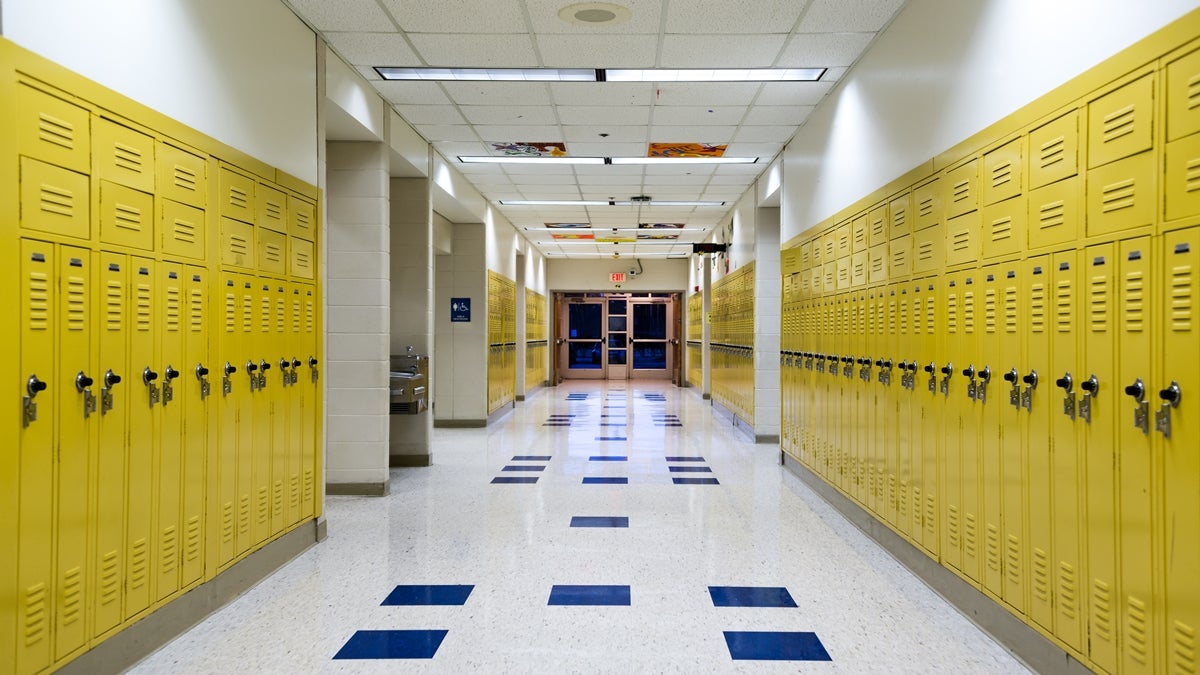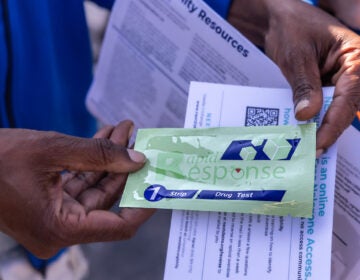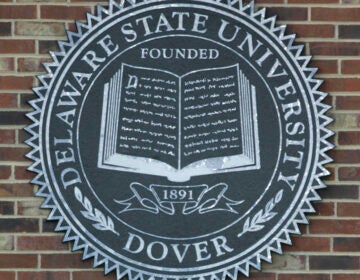As safety bills sit in committee, Delaware school districts make their own improvements
 Photo via ShutterStock) " title="shutterstock_137058641-1" width="1" height="1"/>
Photo via ShutterStock) " title="shutterstock_137058641-1" width="1" height="1"/>
(Photo via ShutterStock)
Several school safety initiatives remain idle while Delaware legislators wait to see if adequate funding will be available in the 2015 budget.
House Bill 221 would require schools to make their doors capable of locking from both the inside and outside. House Bill 33 would require schools to install silent alarms, or “panic buttons,” that would immediately alert law enforcement officials when activated.
These would be the latest school-safety measures since last year, when the state unveiled the Emergency Response Information Portal, a “crisis playbook” of sorts for school officials and local police, fire and EMS.
ERIP arose out of the Omnibus School Safety Act of 2012, which required school districts to create comprehensive safety plans in conjunction with first responders.
Currently, there is a $400,000 “place-holder” in the budget for safety improvements, according to Joint Finance Committee Co-Chair Rep. Melanie George Smith, D-Bear.
“My understanding [and] hope is that the administration will get back to us when we go into mark-up in May with what their plan is for how to spend that $400,000,” Smith explained.
She added that with a projected budget deficit for Fiscal Year 2015, that money could end up getting moved to cover another project.
“Those bills won’t move out of the appropriation committee until and unless we’re sure the money is there for it,” added Smith. “They won’t have an opportunity for a vote on the floor unless and until we’re sure we have the money.”
The General Assembly will return from spring break next week, but some schools aren’t waiting for lawmakers.
Safety Monitors Hired
Last year, the Indian River School District voted unanimously to hire armed school safety monitors for each of its 14 schools.
The monitors, who began work at the start of the current school year, are retired law-enforcement personnel who come from agencies such as the U.S. Secret Service and the Delaware State Police. All of the monitors recently tested to become constables, a designation that grants them power of arrest.
“If, unfortunately, we are faced with a threat inside one of our buildings, we have somebody there who can take care of that immediate threat,” explained Preston Lewis, administrator of student services for the Indian River School District.
So far, Lewis said there have not been any serious incidents.
“If there’s an altercation that erupts in the hallway or cafeteria or anywhere in the building, they’re the first responders, and they’re there to quickly defuse the situation,” explained Lewis. “Many times, we’ve had upset parents that come in and once they see that school safety officer in uniform [and] they’re displaying a weapon, it calms the situation down a little bit.”
A monitor’s day typically consists of helping with pick-up and drop-off, checking school door locks and patrolling the hallways. While some also serve as coaches, all were said to interact rountinely with students.
“They’re walking around talking to people; they’re visible throughout the entire day that they’re on duty,” Lewis said, adding that both students and parents are comforted by the monitor’s presence.
“The students know that these ladies and gentlemen are there to protect them,” Lewis said. “We want the public to know as well.”
Bulletproof Whiteboards
Sen. Nicole Poore, D-District 12, is also making an effort to help schools obtain bulletproof whiteboards.
“When I talk about this, I talk about it as a preventative tool for a teacher who would give their life up for my child,” said Poore, who is a mother of three.
The bulletproof whiteboards resemble a regular whiteboard and have arm straps on the back of the board. The shields weigh about four pounds and are capable of taking several bullets. Hardwire Armor Systems uses DuPont Kevlar to make the whiteboards.
“We are asking our teachers not just to nurture our kids and educate our kids and be all of the things that we’ve asked them to be, and be responsible for testing, but also, in a moment’s notice, possibly give up their lives, should a shooter come into that school,” said Poore, who likened the whiteboards to the presence of fire extinguishers and defibrillators within school buildings.
Poore’s goal is to raise money to establish a pilot whiteboard program within the Colonial School District by the beginning of the coming school year. The cost would be about $400,000.
Colonial District Superintendent Dr. Dorothy Lynn said that without donations, the school will not be able to afford the boards on their own. In the meantime, the district is trying to update safety measures with key cards and security cameras.
“Anything that we can do [to work] with our legislators to secure our schools for the safety of the kids and staff is always very favorable,” Lynn said.
WHYY is your source for fact-based, in-depth journalism and information. As a nonprofit organization, we rely on financial support from readers like you. Please give today.




